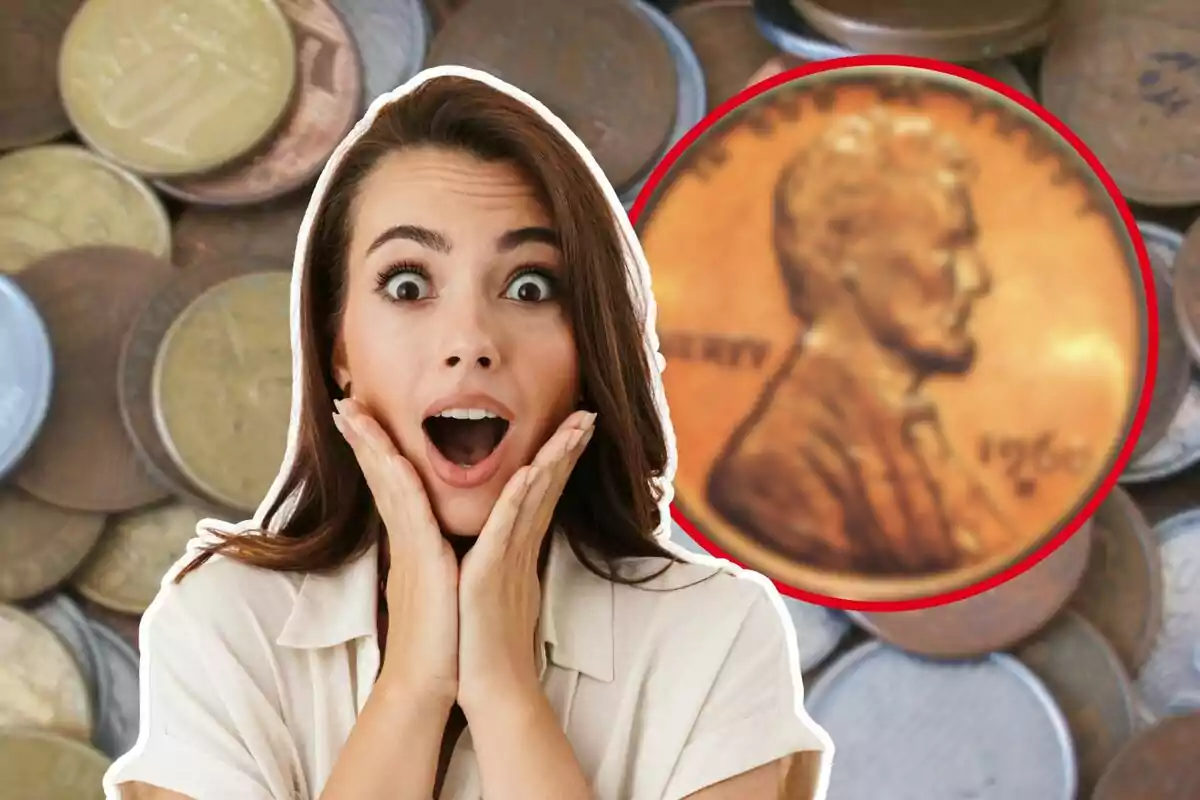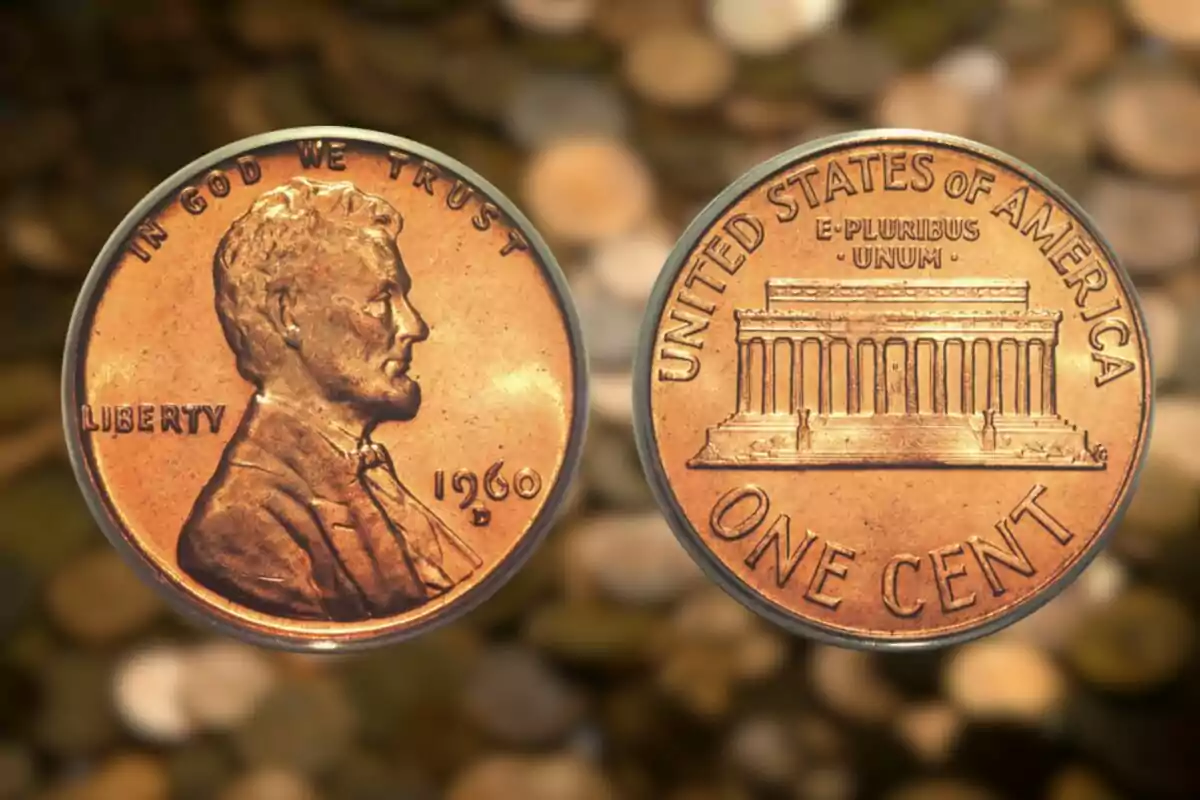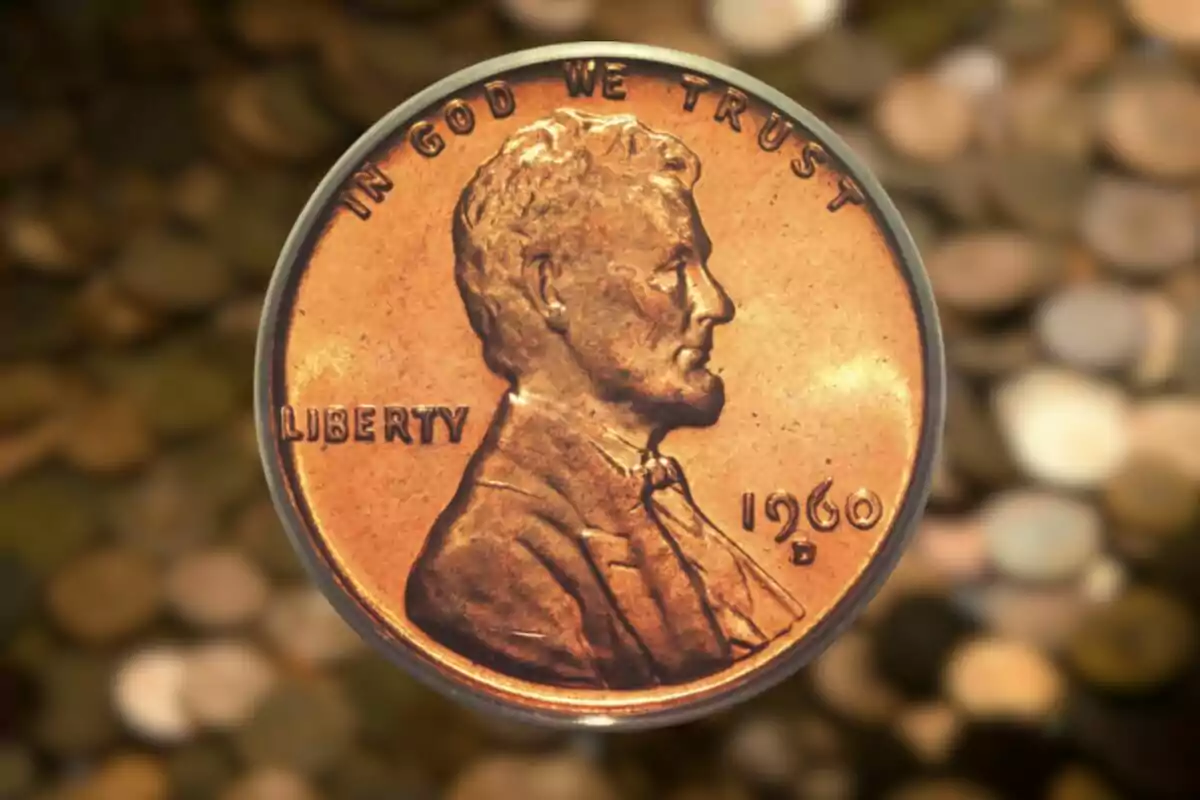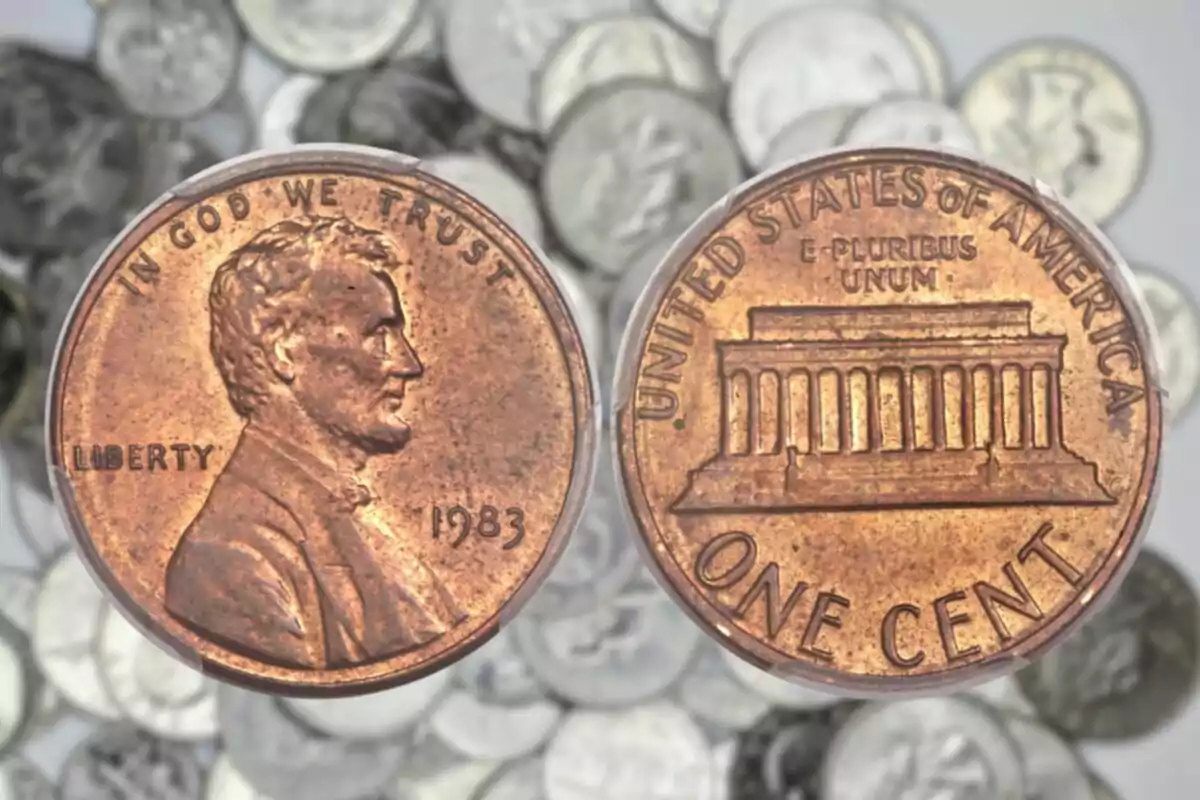
Neither Gold nor Silver: the Fascinating Lincoln Penny That's Worth a Lot of Money
Although it may seem unbelievable, even the smallest errors can skyrocket the value of some penny coins.
The world of numismatics is fascinating, full of history and details that often go unnoticed. However, sometimes manufacturing errors in coins can become a source of great interest and value. These seemingly small flaws can transform a common coin into an object highly prized by collectors.
Stamping errors are not rare, but some have such special characteristics that they become true treasures. An example of this is the 1960-D Small Date Over Large Date penny. It features variations in the date, repunched mint marks, and even stamping errors, making it unique.

The 1960-D Small Date Over Large Date Penny: An Error of Great Value
The 1960-D Small Date Over Large Date penny is valuable due to two manufacturing flaws. First, the "D" mint mark was repunched, creating a double mark effect. This double appearance makes the coin highly sought after among collectors, as it is an error not easily found.
Additionally, the second feature that increases its value is the date variation. The "Small Date" was stamped over the "Large Date," making this coin an even rarer piece. This type of date error not only increases the coin's uniqueness but also makes it a highly desired piece.

Specimens in MS66 quality have reached prices of up to $4,025 at auctions, showing their high demand in the numismatic market. The rarity of this 1960-D penny makes it one of the most sought-after coins by collectors of coins with stamping errors. The value varies according to its condition, but undoubtedly, those in exceptional conditions are the ones that reach the highest prices.
The 1983 Penny Without Mint Mark: Another Rare Find
Another interesting example of a rare coin is the 1983 penny without a mint mark. In 1983, coins minted in Philadelphia did not carry the "D" or "S" mark that usually indicates their place of manufacture. This detail makes the pennies from that year especially unusual, as most coins come from other mints, such as those in Denver or San Francisco.
Additionally, some of these 1983 pennies feature another error that further increases their value: the "doubled die reverse." This flaw occurs when the stamping machine strikes twice, leaving a double image on the bottom of the coin.

This error is very rare and turns the penny into a highly desired piece. It is estimated that only about 5,000 1983 pennies have this error, making them extremely valuable objects for collectors. Some specimens with this flaw have reached up to $7,000 at auctions.
The 1960-D Small Date Over Large Date penny and the 1983 penny without a mint mark are examples of how an error can turn a simple coin into a treasure. Numismatics, with its fascinating world of rarities and details, remains a field full of surprises for those who venture into the search for unique pieces.
More posts: